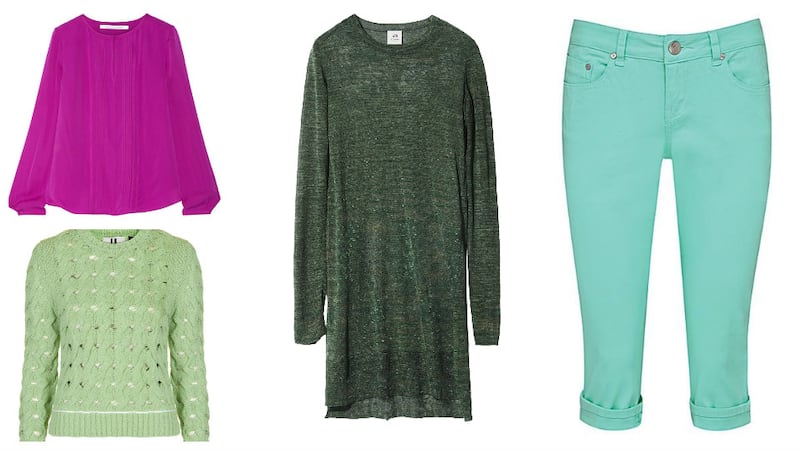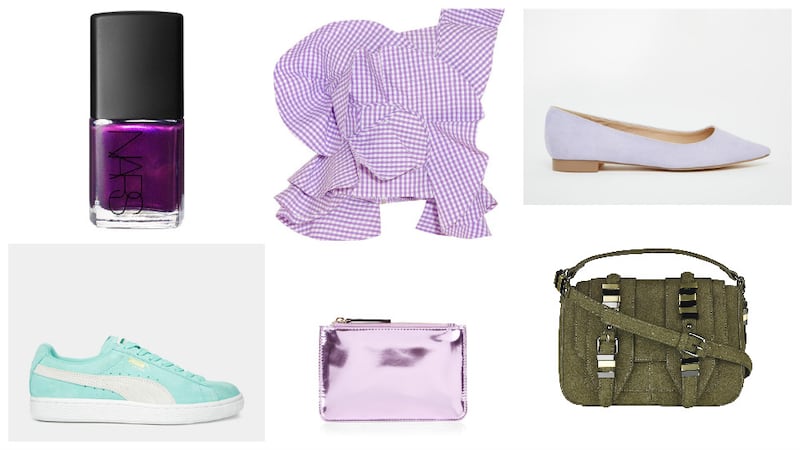Today is International Women's Day, a century-old tradition that – now we have Twitter, Facebook and a dedicated feminist media – men cannot pretend is just another cute thing we gals do. But we are not here to discuss the inherent inequalities between the genders; we are here to talk about green, purple and white, the colours that represent strong feminist agitation.
Let's look back to 1908, when British suffragette Emmeline Pankhurst had reached an impasse. It was a tough year. Her daughter Sylvia left Emmeline's feminist organisation, the Women's Social and Political Union, to form a splinter group. Emmeline was arrested and charged with obstruction, for which she would spend six weeks in prison. Her organisation lacked cohesion and needed to capitalise on its forward momentum, without which women might never get the right to vote.
Enter the green, white and purple flag, the new colours of Pankhurst's union. In an edition of her newspaper, Votes for Women, Pankhurst explained the choice. Purple stood for "the royal blood that flows in the veins of every suffragette"; white was an emblem of "purity in private and public life"; and green represented "hope and the emblem of spring".


The union sold badges, ribbons and many other items in these colours and made universal suffrage a more visible issue. Women wore them in their droves.
Is white all right?
Unsurprisingly, white has fallen somewhat out of favour as a feminist identifier. Along the line, women everywhere realised that, if virginity and a patriarchal standard of moral purity are benchmarks, very few people would qualify as feminists. And, as an aside, the modern woman just cannot wear white all the time: it’s a ketchup and coffee magnet.
But purple and green are still popular. Conflating feminism with royalty lifts women up when they are made to feel like lesser humans. Greens represent growth, health and the promise of a flourishing future. These colours represent hope and have done so for more than a century.
Don’t think pink
Some people will ask why pink wasn’t chosen. Doesn’t pink represent all things feminine? Well, yes and no. Pink is the colour of princesses and candyfloss fantasy. It is both shocking and sedate. Pink contains multitudes; for every woman who claims that it is infantilising, there is another who asserts herself with it.
However, this conflict was not in play in 1908, when Pankhurst consulted her colour chart. During the 19th century and until the 1940s, pink was worn mostly by young boys and was considered a masculine colour. In Britain, pink was seen as a logical step before progressing to the red of a military uniform. Only after the second World War did pink become associated with women in the West.
Today, the organisers of IWD invite women to wear purple ribbons as a sign of solidarity. If you can’t find one, wearing purple or green clothing will do. Alas, lighter mint and lavender – which are closer to the Women’s Social and Political Union’s original shades than the ubiquitous army greens and aubergines that dominate the high street – are relatively hard to find.
It’s not impossible, however. Mint and lavender are essential spring colours: free and breezy. Accent pieces in these shades – think accessories – will go a long way. We love Puma’s spearmint suede trainers and New Look’s cheap, thistle-shaded reflective purse. Otherwise, there is a purple and a green for everyone, from acid-brights and grey-tinged mallow and artichoke to earth-hewn shades of forest green and ancient Tyrian. And of course all the green can get another airing come Paddy’s Day.










